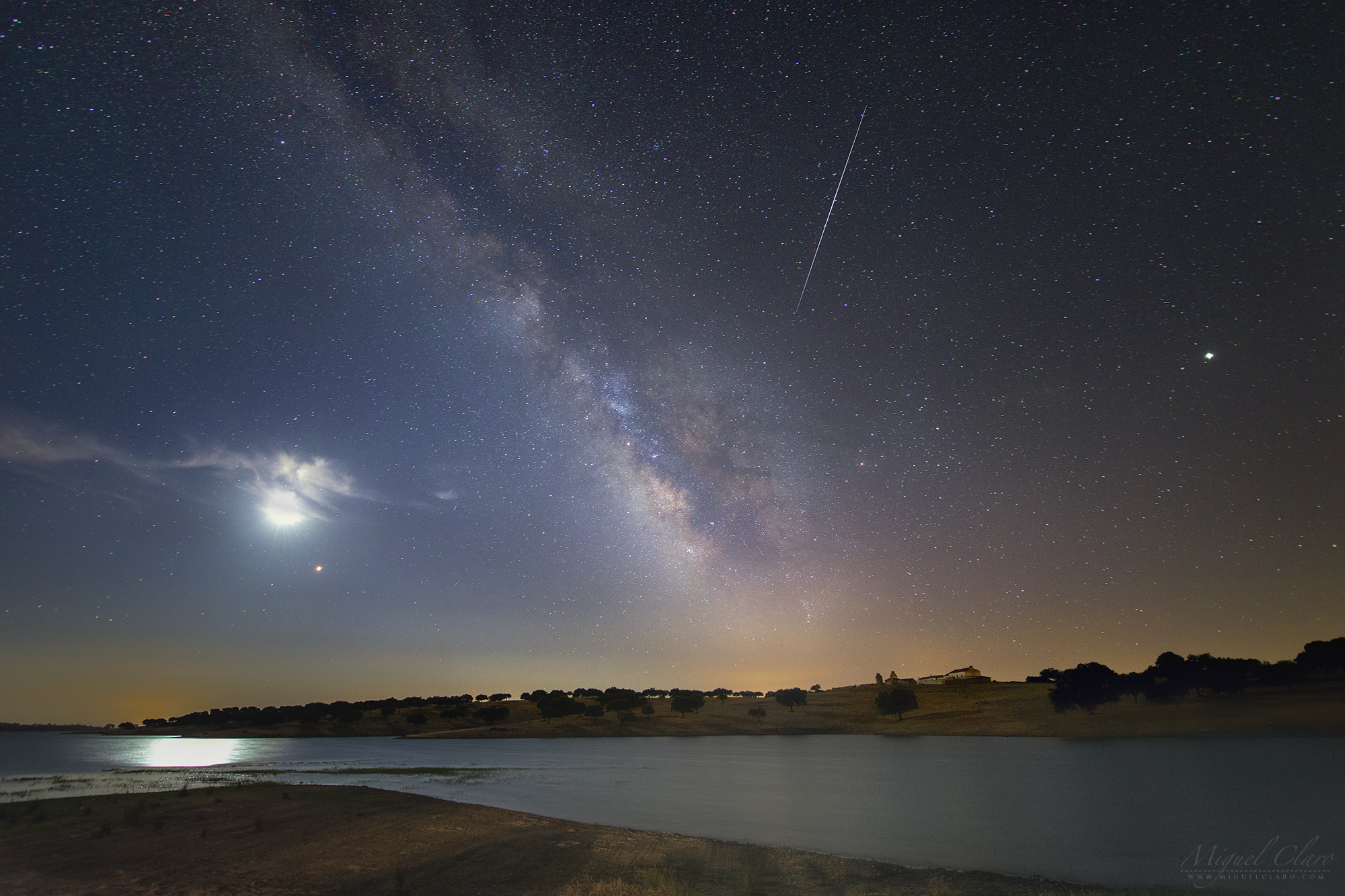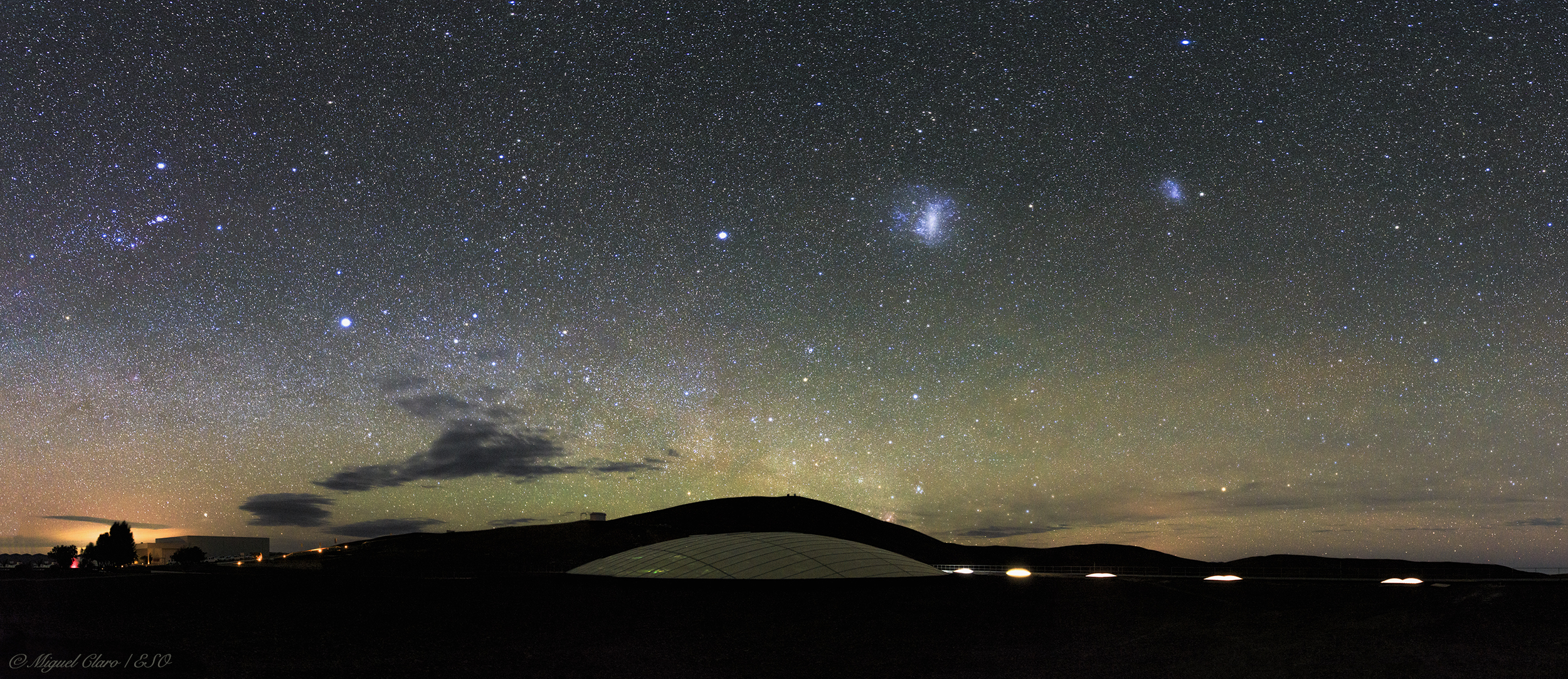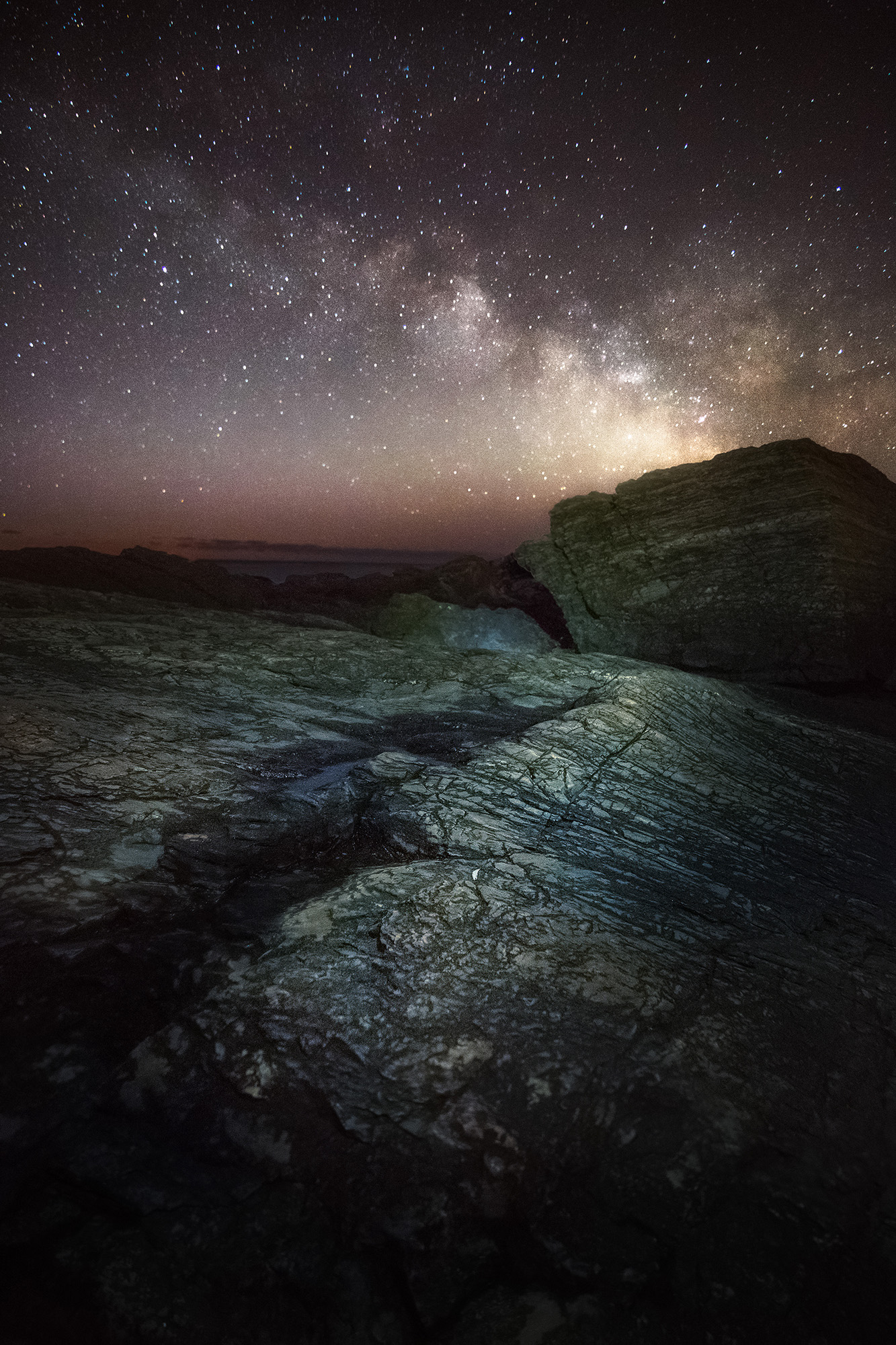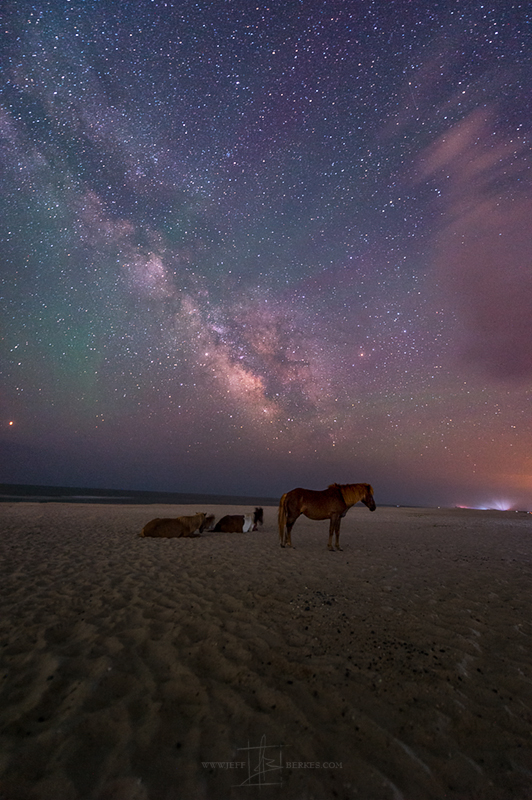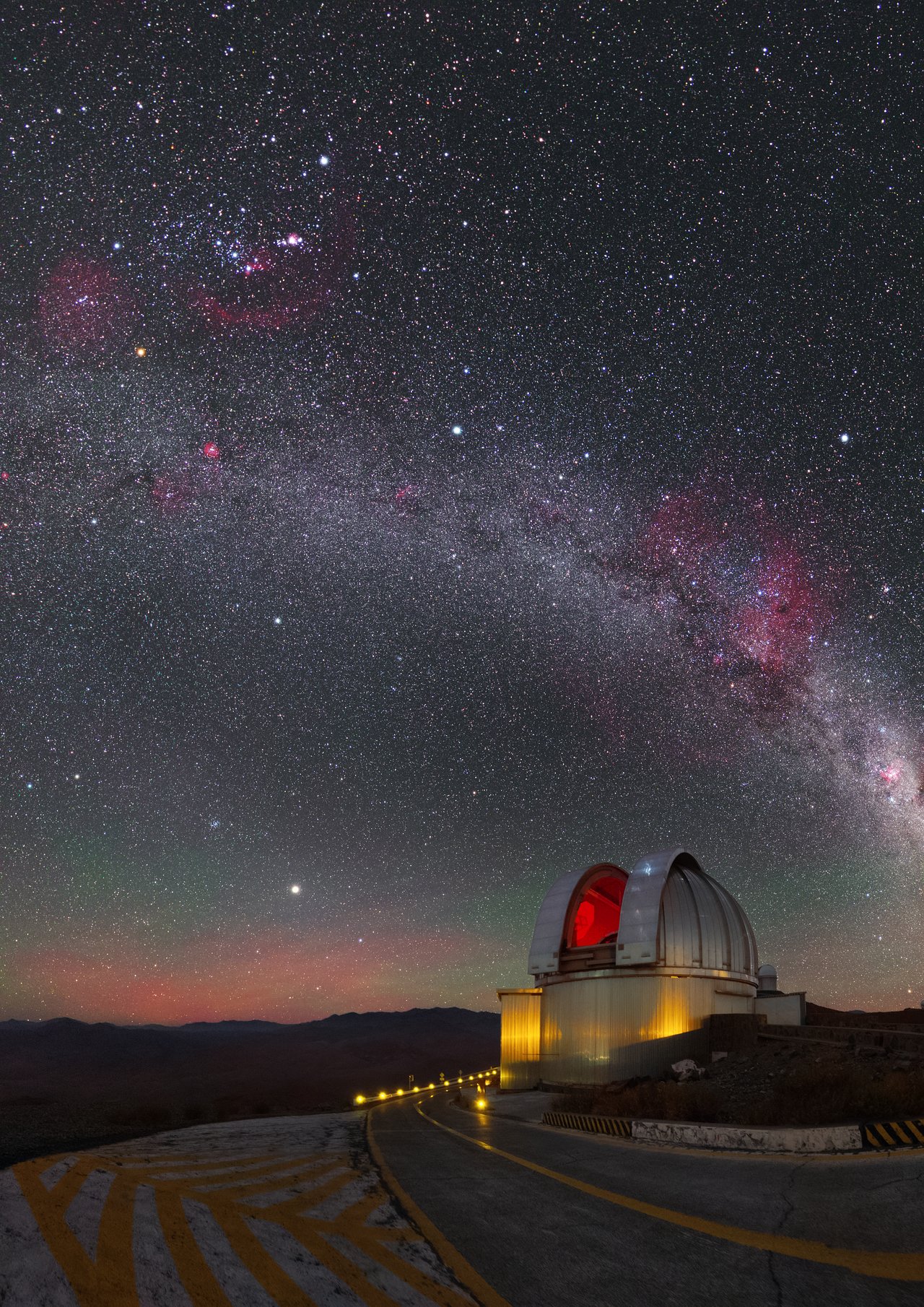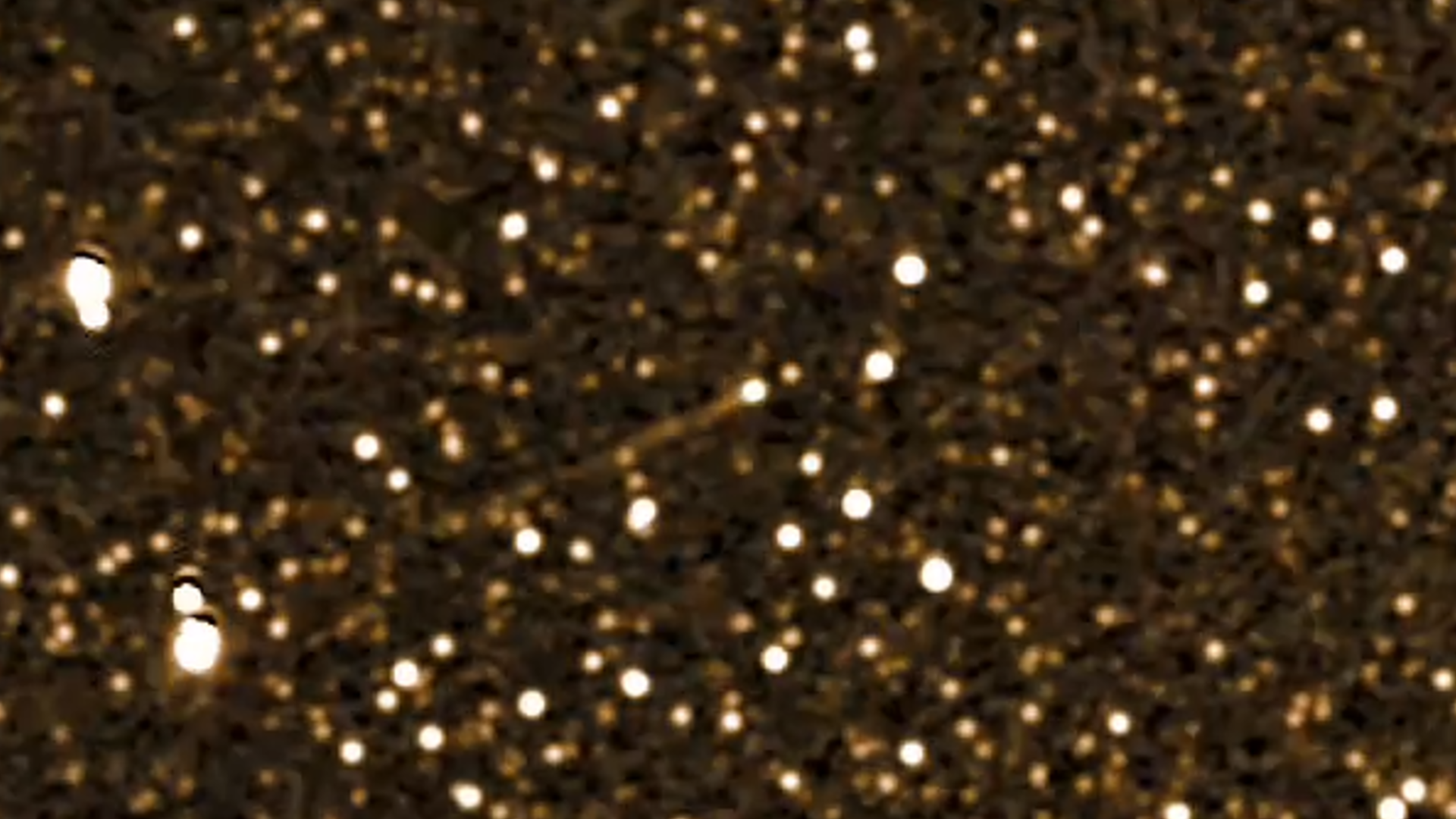The 100 Best Space Photos of 2018!
Satellite Flare
A scene captured by astrophotographer Miguel Claro from the Portuguese village of Campinho in the Dark Sky Alqueva Reserve shows a partially eclipsed moon, Mars and the Milky Way with a flare from the Formosat-2 satellite. The bright planet Jupiter is also visible on the right edge. [Full Story: Satellite Flare Photobombs a Lunar Eclipse Under the Milky Way (Photo)]
Centaurus A
Centaurus A, a galaxy also known as NGC 5128, beams brightly in the Centaurus constellation in this image by astrophotographers Warren Keller and Martin Pugh. Since it was discovered in 1826, astronomers have yet to agree on how to classify this galaxy, because it exhibits properties of both elliptical and lenticular galaxies.
Airplane Photobombs the 'Blue Moon'
An airliner traverses the near-full Blue Moon on March 30, 2018 in this photo taken by Kevin McCarthy in Charlotte, North Carolina. [Full Story: In Photos: The Last 'Blue Moon' of 2018]
Venus, the 'Evening Star'
The bright planet Venus glows in the evening sky above the European Southern Observatory's Very Large Telescope in northern Chile. Pictured here is Auxiliary Telescope 1, one of four such telescopes that make up an astronomical interferometer at the observatory.
Magellanic Clouds Loom Over the Futuristic Hotel from 'Quantum of Solace'
The Large and Small Magellanic Clouds glow above Residencia, the European Southern Observatory's hotel featured in the James Bond movie "Quantum of Solace." Astrophotographer Miguel Claro captured the photo from the Atacama Desert in Chile. [Full Story: Magellanic Clouds Loom Over the Futuristic Hotel from 'Quantum of Solace' (Photo)]
Milky Way Rises Over Maine
The starry core of the Milky Way rises over the coast of Maine in this early morning view by astrophotographer Charles Cormier. "The winter months are a great time of year to see the stars as the air is cold and visibility is good," Cormier told Space.com. "The core the galaxy is visible for a short window of time before sunrise this time of year."
'Flying Saucer' Cloud over Chile
A lenticular cloud looming over Chile's Atacama Desert looks like a flyer saucer in this photo by astrophotographer Yuri Beletsky. He captured this photo from an altitude of about 14,000 feet (4,300 meters) on the night of Dec. 14, 2018. The Orion constellation dominates the night sky to the right of the cloud, while the Andromeda galaxy appears as a tiny smear in the sky to the left of the cloud.
Breaking space news, the latest updates on rocket launches, skywatching events and more!
Cosmic Ponies
Three horses bask on the beach beneath the glorious Milky Way galaxy in this photo by astrophotographer Jeff Berkes. He captured the photo at Assateague National Seashore in Maryland in the summer of 2018.
Perseid Meteor Shower
A Perseid meteor, Mars and the Milky Way light up the night sky in this photo taken near Las Vegas by Tyler Leavitt overnight on Aug. 12-13, 2018.
Pink Milky Way
Peppered with pink patches of ionized hydrogen gas, the Milky Way galaxy shines over the La Silla Observatory in Chile in this photo by European Southern Observatory photo ambassador Yuri Beletsky. The pink clouds are emission nebulas, or star-forming regions filled with hot, young stars.

Hanneke Weitering is a multimedia journalist in the Pacific Northwest reporting on the future of aviation at FutureFlight.aero and Aviation International News and was previously the Editor for Spaceflight and Astronomy news here at Space.com. As an editor with over 10 years of experience in science journalism she has previously written for Scholastic Classroom Magazines, MedPage Today and The Joint Institute for Computational Sciences at Oak Ridge National Laboratory. After studying physics at the University of Tennessee in her hometown of Knoxville, she earned her graduate degree in Science, Health and Environmental Reporting (SHERP) from New York University. Hanneke joined the Space.com team in 2016 as a staff writer and producer, covering topics including spaceflight and astronomy. She currently lives in Seattle, home of the Space Needle, with her cat and two snakes. In her spare time, Hanneke enjoys exploring the Rocky Mountains, basking in nature and looking for dark skies to gaze at the cosmos.
